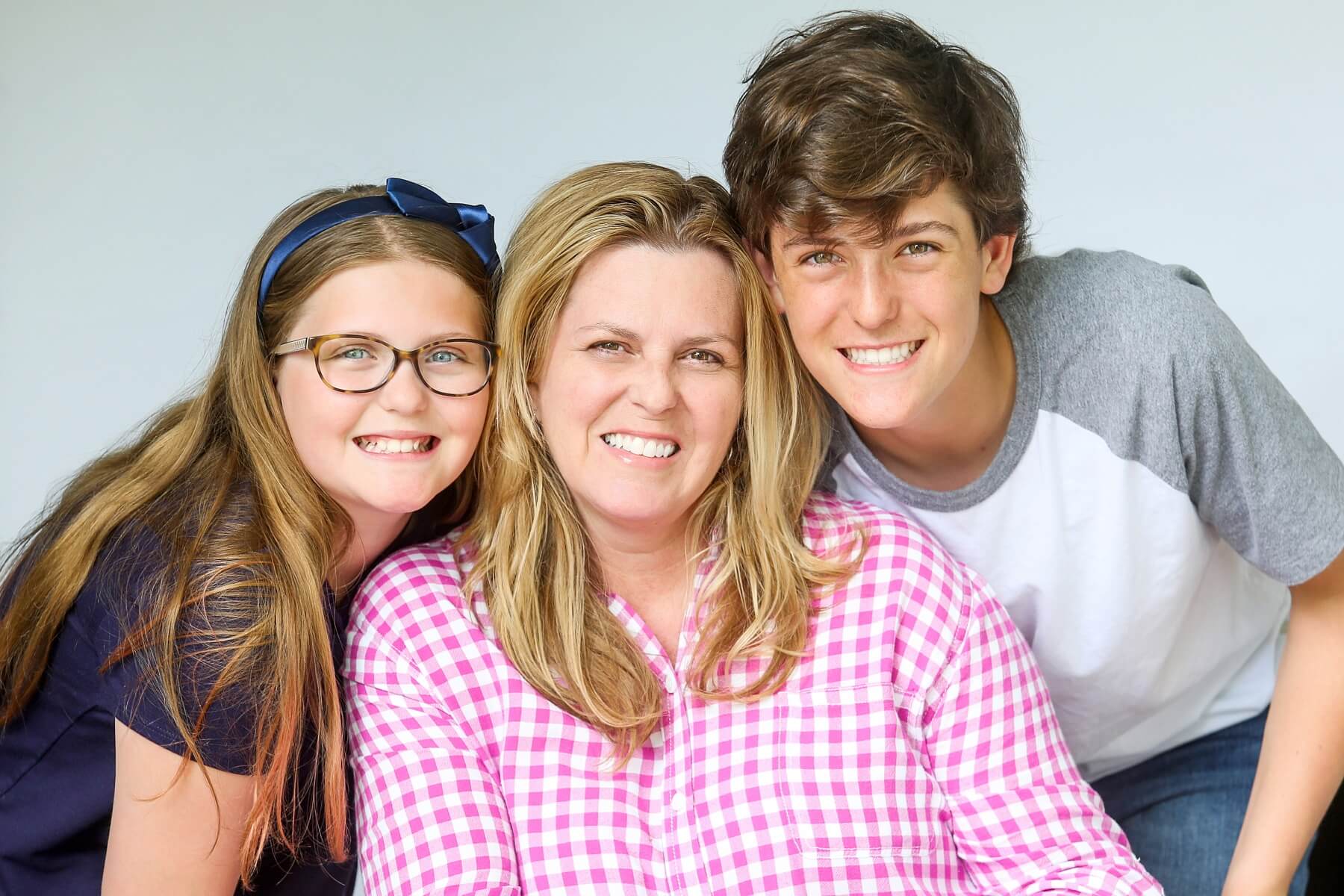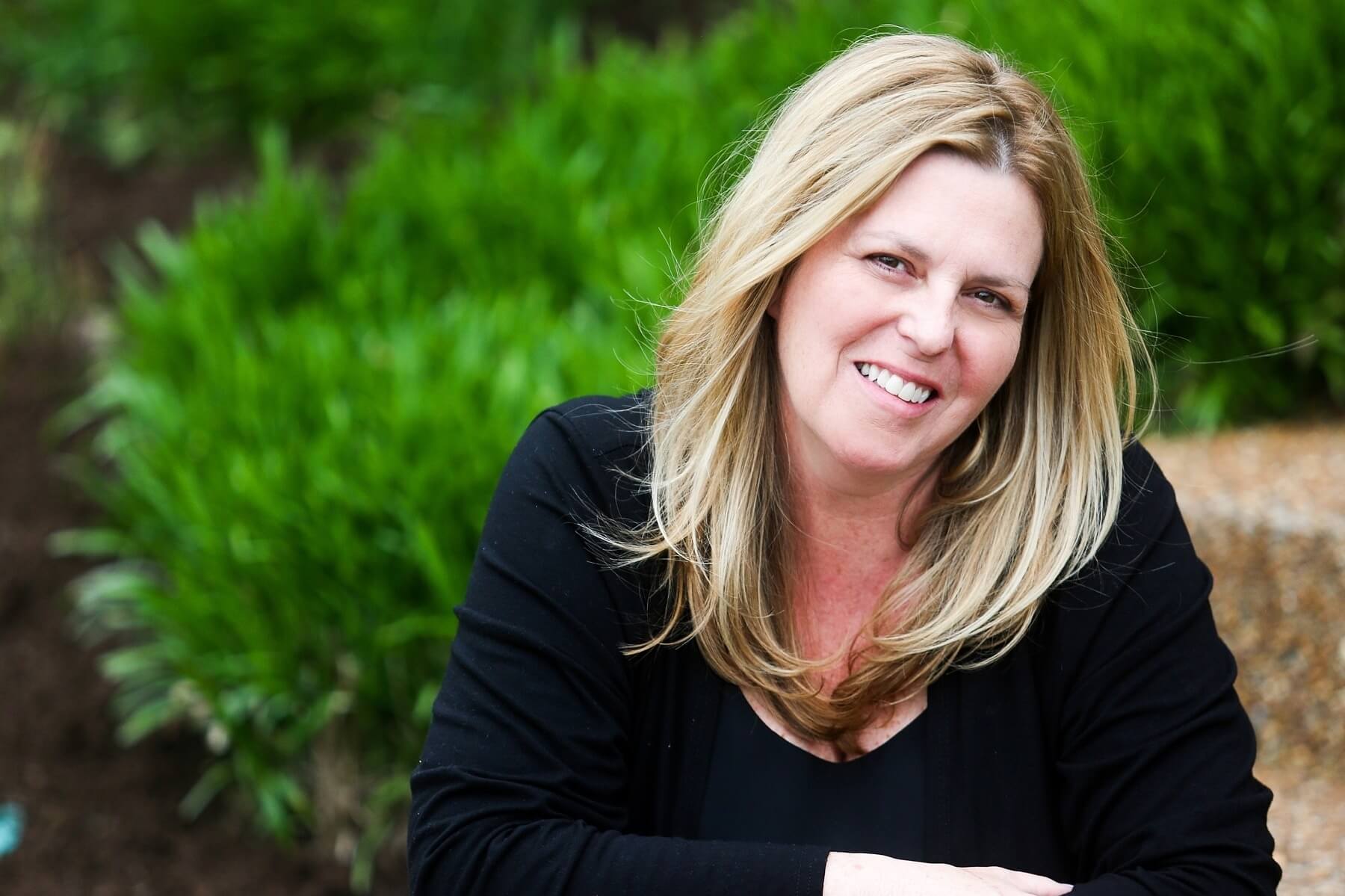Pam Gaffney was already a mom to 4-year-old Trenton when she gave birth to her second child, daughter Marlaina. So she knew the exhaustion that comes with having a newborn. But when Marlaina was still not able to sleep through the night by 14 months and had been sick off and on throughout her short life, Pam knew something wasn’t right. She went to three different pediatricians before she found one who agreed — something indeed wasn’t right. Pam and Marlaina were sent to the Monroe Carell Jr. Children’s Hospital at Vanderbilt, where Marlaina was tested for Cystic Fibrosis (CF). The test came back positive. One month later, Pam was advised to have Trenton tested as well since CF is a genetic disease. He, too, tested positive. And with that, the trio began their life-long journey that is living with CF and all that that entails. And make no mistake, it entails A LOT.
As we head into May, which is Cystic Fibrosis Awareness Month, we’re honored to introduce you to this inspiring mom who spends countless hours organizing and ordering medications, sterilizing equipment, navigating insurance and encouraging her kids, now 15 and 11, to lead their healthiest lives possible — for as long as possible — all while hoping there’s a cure found within their lifetime.

Tell us about you — where are you from? What do you do?
I’m originally from Massachusetts, but I’ve been here for 20 years. I work in the occupational therapy department at a local medical center, where we help people recover from strokes, orthopedic surgeries and traumas. It’s very rewarding — every single day you get to help someone.
Your children, Trenton and Marlaina, both have Cystic Fibrosis (CF). What is CF, and how were they diagnosed?
CF is a genetic disorder that affects all organs of the body. It is an over-production of mucus causing serious lung infections and digestive challenges. (Read the complete clinical definition of CF HERE.)
Marlaina was always so sick as an infant and had difficulty sleeping, and she struggled to lay flat. I went to the pediatrician, who thought I was just an overtired, overstressed mom. I was, but the third pediatrician I took her to said, “Let’s get some things checked out at Vanderbilt.” She didn’t tell me what they were checking for until I went to the pulmonary clinic.
CF is diagnosed with a sweat chloride test. This was performed, and Marlaina was diagnosed right away — I was outside when I heard the phone and saw it was the head doctor. She said, “I’m really sorry to tell you but the test came back for your daughter, and it’s positive.” She then was in the hospital for two weeks, and she slept through the night for the first time in the hospital at 14 months. I just remember watching her sleep and being amazed. That was 2009.
And when was Trenton diagnosed?
He was 5. Thirty days after Marlaina was diagnosed, they said we should test Trenton because CF is a genetic disorder. He was treated as an asthmatic when he was younger and had a few issues, but not like her. Looking back, one of the symptoms is sweaty, salty skin. When he was a toddler, he would periodically have a little bit of salty sweat on his skin at night — I thought it was me being a new mom and putting too many covers on him. I remember my mom and sister saying he’ll be fine, but his test came back positive.
What was your reaction to these diagnoses?
Those phone calls are truly what people say — you feel like your whole world just fell out. I can remember where I was standing, what the weather was like — you remember it.


What does a day in the lives of your children and you look like?
They wake up at 5:30 a.m. and have an hour of respiratory treatments, which includes the nebulizer, medications and vest percussion. They take about 19 oral medicines each, and then they have the respiratory treatments again before they go to bed. That’s two hours a day every day of their lives.
In addition to the second hour of respiratory care, Trenton also has supplemental calories every night for weight gain due to his pancreatic insufficiency. Over 95% of CFers are pancreatic insufficient. Overnight feeds supplement his calorie intake in addition to his normal daily caloric intake. He also has to take 12-18 enzyme capsules a day on top of his regular oral medications — he takes them before he eats.
They go to school, where they both receive excellent care being under a 504 plan, which gives me the opportunity to meet staff and teachers, and educate them on providing a healthy environment. Things that keep a CFer safer are things like not sitting under air vents, or not sitting next to a sick child. Air quality is significant for CFers. Bacterias and molds can be breathed in, and they stick to the mucus and cultivate in the lungs. That is what causes the numerous and frequent lung infections. They each already have four or five bacterias that have cultivated, which stinks. CFers can also acquire pseudomonas, which is very hard to protect a CFer from because it’s found in our water and shower heads and pools and the sprinklers in the vegetable aisle. They also have to be careful around soil and rotten vegetables because of the bacteria found in them.
These kids go through a whole lot before the day even begins, and they do it with great attitudes.
In looking at all of the medicines and equipment, I have to ask — what is the monthly cost for all of this?
One very important blessing in our lives is that they are already taking the leading corrective drug on the market that has been FDA-approved for their mutation. It’s not a cure, but it treats the underlying cause of CF. It costs $311,000 per year before insurance, but that medicine is the closest thing to a cure. (Thank you, Vertex!) Between my group health insurance, co-pay cards and pharmaceutical grants, I get all the medications at as reasonable a cost as possible.
How many hours a week does it take to be a caregiver of two children with CF?
Between proper sterilization via CDC guidelines, working with insurance, and ordering and organizing all of the meds, it’s about 20-25 hours per week. It’s a lot of time on the phone.
How do you give your kids as normal a life as possible despite CF?
I chose to put them in public school whereas a lot of CF parents choose to homeschool. I teach them hand-washing, and they have to be careful if their friends are coughing. I just let them do everything they can do — there are very few things they can’t do. They’re really involved in sports to stay healthy. That’s one thing that is important — to exercise and rest as much as possible.

What is something people don’t know about CF?
That with continued research and funds, we could get a cure for this. It’s there, we just need more research. Vertex is the leading manufacturer — they’re probably going to be the leader in finding a cure.
At the end of the day, what is your No. 1 goal?
We are truly blessed because of the top care we receive at Vanderbilt, with the great research and phenomenal physicians and wonderful medical supply vendors. We work with four different pharmacies to properly care for Trenton and Marlaina to give them the best life we can possibly give them — that is my goal. My other goal is teaching them to advocate for their own health — to be conscientious of their surroundings. They have to be careful and advocate for themselves.
When you’re not working, how do you spend your time?
I love to watch the kids’ sports. I’m also knee-deep in CF fundraising — I’ve raised about $66,000. I was also at the Capitol last week for the Senate appointing May as CF Awareness Month in Tennessee. I’m on boards at Vanderbilt — I’m the family advisory rep for the Nursing Board this year, and I’m also on the Family Advisory Hospital-Wide Board to represent the CF Advisory Board, which I’m also on.

What has been the scariest part of your journey? What has been the most encouraging?
The scariest part is the answer to the question of if they’re going to die. I answer it, but that’s probably the hardest thing. But I also explain that anyone could die early from any number of things.
The research has been the most encouraging. There are so many doctors working to hit the same goal — they’re all wanting to fight and get a cure for this disease.
What advice would you offer someone whose child was just diagnosed with CF?
Take it one step at a time, get educated, get involved, and be an advocate.
To learn more about Cystic Fibrosis, including how you can help donate or get involved in finding a cure, visit the Cystic Fibrosis Foundation at cff.org. And we have also compiled a few “fast facts” about CF, which you can read HERE. Finally, you can take part in the Great Strides 5k walk, an annual CF fundraiser, taking place this Sunday, May 5, at Bicentennial Mall State Park. Check-in starts at 1 p.m., and the walk starts at 2 p.m. Learn more about how you can come walk with Trenton and Marlaina and support the cause HERE.
Thank you to Pam for sharing your world with us. And thank you to Leila Grossman of Grannis Photography for the beautiful and insightful photos.



















